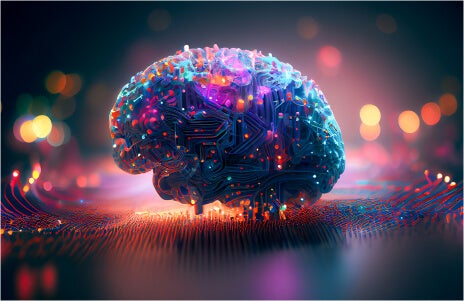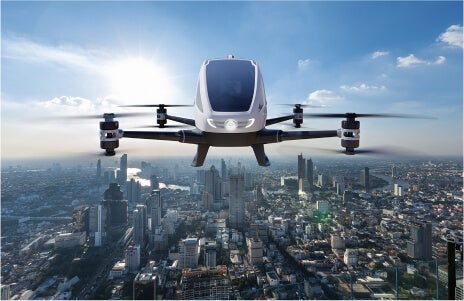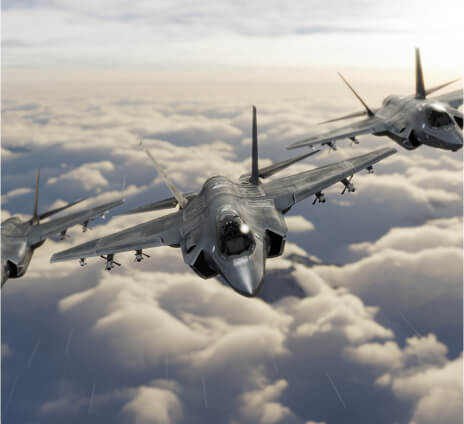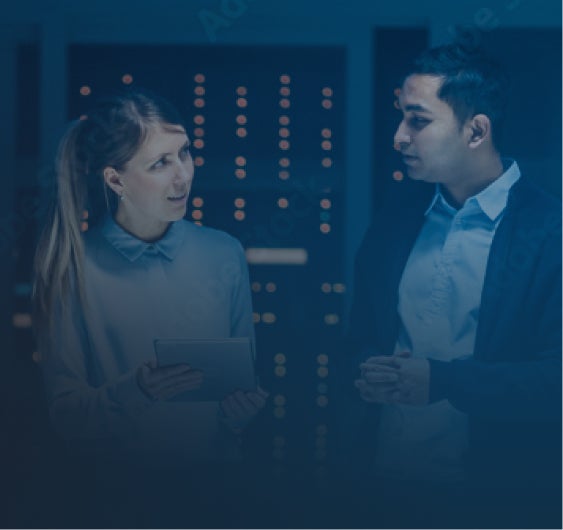See what API testing solution came out on top in the GigaOm Radar Report. Get your free analyst report >>


See what API testing solution came out on top in the GigaOm Radar Report. Get your free analyst report >>
The aerospace industry is one of, if not the most technically complex and sophisticated, industries that exist. Much of it has to do with the diversity of the aircraft that are created for commercial as well as defense purposes. There’s a large overlap in the latest trends in technology used by the aerospace industry, but there are also interesting areas that differ and are worth mentioning. However, one of the main contributors to changes and trends in the aerospace industry is cost.
The average passenger airliner costs between $82 and $350 million, and based on the type of military aircraft, it can cost between $82 and $2.1 billion. A Boeing 787-10 goes for $340 million and a Northrop Grumman B-2 Spirit Stealth Bomber will set you back $2.1 billion.

Commercial aircraft cost a significant amount due to factors like extensive research, development, production, and operations. Developing a new commercial aircraft involves substantial R&D efforts, including designing and testing new technologies, aerodynamics, materials, and safety features. This phase often spans several years and requires a substantial investment in skilled engineers, scientists, and facilities.
This is the same for military aircraft, but in addition, they often pioneer new technologies and innovations that lead to higher R&D costs as well as the need for very specialized engineering talent.
Another factor in the cost of commercial aircraft is testing and certification. Extensive testing and certification processes are required to ensure that an aircraft meets safety, performance, and environmental standards. Similarly, military aircraft must undergo rigorous testing and certification processes to ensure their performance, safety, and compliance with military standards are achieved.
These and other influences, like supply chain complexities, material used (advanced composites and titanium), commercial use customizations (cabin layout, in-flight entertainment system, galley arrangements, and so on), or military customizations like weaponry, avionics, stealth, survivability, and other mission-specific equipment, can drive up costs.
One of the approaches being used by the aerospace industry to mitigate costs is the adoption of open architectures and interoperability. Open systems architecture is a system design approach that aims to produce systems, such as software and hardware, that are inherently interoperable and connectable without recourse to retrofit and redesign. The Future Airborne Capability Environment (FACE™) Consortium has established an open procurement environment that facilitates reuse to meet four core goals:
The FACE™ Consortium is a government and industry partnership dedicated to accomplishing the four core goals using open industry standards, advanced integration, and maintenance technologies. Military and commercial organizations can purchase FACE-certified products found in the FACE registry.

The use of artificial intelligence (AI) and machine learning (ML) comes up at aerospace events, and one thought is to replace the commercial airline copilot with an AI copilot. There are some hefty safety hurdles to overcome before this scenario can be realized.
Nonetheless, analytical AI can be applied in aerospace to predict when a part is going to fail through anomaly detection or by tracking, scheduling, and managing maintenance based on historical data and predictive analytics. However, this is completely the opposite for defense.

The U.S. is developing AI capabilities for a broad range of military functions that will have a significant impact on the defense sector. AI technologies are rapidly evolving. Defense primes are advancing their AI capabilities organically and through acquisitions.
AI is being applied in operations like intelligence, surveillance, reconnaissance (ISR), logistics, cyber, command and control, and drone swarms. Perhaps
the most publicized and controversial AI application in defense concerns autonomous vehicles and weapon systems. AI technology will make military operations more efficient, accurate, and powerful while also offering long-term cost-cutting potential.
In the commercial space, one of the major trends is the push towards more sustainable and environmentally friendly aviation. This refers to the development of electric and hybrid electric propulsion systems.

The FAA has put out the Urban Air Mobility (UAM) Concept of Operations in support of developing air transportation for a wide range of passenger, cargo, and other operations within and between urban and rural environments using new and innovative aircraft. Vehicles such as electric vertical takeoff and landing (eVTOL) types of aircraft are currently under development. Nevertheless, the U.S. military is also embracing eVTOL for military missions.
Advancements in software solutions and practices are also making improvements in productivity, quality, time to market, and costs. Other technologies, like cybersecurity, have become of paramount concern. Here are a few that are having a powerful impact on development and need mentioning.
Specific to the aerospace and aviation sectors within the military/defense (Mil/Def) industry, they are responsible for designing, developing, and manufacturing a wide range of military aircraft, helicopters, and unmanned aerial vehicles (UAVs). These vehicles serve various purposes, including reconnaissance, surveillance, combat, and transport.

Military aircraft are equipped with advanced avionics systems, high- performance engines, and cutting-edge weapon systems to ensure air superiority and the effective deployment of military operations. This sector is also involved in space exploration and satellite technologies. Military satellites are critical for communication, intelligence gathering, and navigation. They facilitate secure and real-time communication between ground troops, aircraft, and command centers.
Additionally, military space technology contributes to early warning systems, weather monitoring, and global positioning capabilities. The military is not required to adapt commercial aviation safety certification guidelines, but they do so because such guidelines enable a more robust, safe, and secure aircraft for the warfighter.
DO-178C, which is also published in Europe as EUROCAE ED-12C, is the standard for “Software Considerations in Airborne Systems and Equipment Certification.” It’s a core standard for all avionics or airborne systems and a document by which certification authorities such as the Federal Aviation Administration (FAA), European Union Safety Agency (EASA), and Transport Canada approve and certify all commercial software- based aerospace systems.
Avionics is an assembly of electronics subsystems integrated onboard freighter aircraft, military aircraft, business jets, and other private-owned, chartered, and unscheduled aircraft. These systems include engine controls, flight control systems, navigation, communications, flight recorders, lighting systems, fuel systems, electro-optic (EO/IR) systems, weather radar, and performance monitoring systems.
Without certification, commercial airborne software systems cannot be deployed. The military is not required to adapt commercial aviation safety certification guidelines, but they do so because such guidelines enable a more robust, safe, and secure aircraft for the warfighter.
As safety and security concerns grow due to advances in technology and their application in avionic systems, one standard cannot address all solutions and best practices. Therefore, there are supplemental RTCA guidance documents that contain clarifications, frequently asked questions, discussion papers, and rationale to DO-178C. Here are just a few:
Though not part of the RTCA library, an important standard to include is SAE AS9100D: Quality Management Systems – Requirements for Aviation, Space, and Defense Organizations. It’s the international quality standard used by the aerospace industry for applying best practices in product safety, security, and performance that help run your organization efficiently and effectively.
Organizational best practices and processes aid teams in getting organized, reduce costs, mitigate risks, boost productivity, and drive continuous improvement.
Organizations certified to this standard demonstrate a commitment to excellence and the delivery of quality. It provides your customers with a way of determining whether you are a viable and attractive alternative to other suppliers.
In addition, to stay up-to-date on FAA regulations, the FAA Dynamic Regulatory System (DRS) is a knowledge center that includes all regulatory guidance material and is continuously updated.

